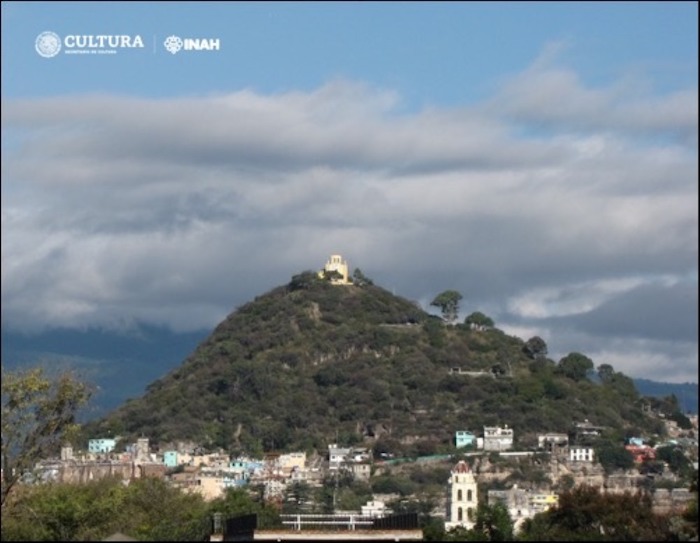 ATLIXCO, MEXICO—According to a statement from the National Institute of Anthropology and History (INAH), a team renovating a Catholic chapel dedicated to archangel San Miguel uncovered vestiges of a pre-Columbian temple known from legend in the central Mexican city of Atlixco. After stumbling upon 1,000-year-old artifacts such as clay vessels, stone tools, and decorative ornaments, the team excavated stone walls and floors of the fabled teocalli, or temple, feet below the modern chapel. The ancient structure was built by members of the Mesoamerican Nahua culture, which flourished for centuries before the arrival of Europeans in the 1500s. Many local Atlixquenses believed the temple once stood at the summit of a volcanic mound called San Miguel Hill—a belief confirmed by the recent finds. “A teocalli did exist on the summit of the hill, San Miguel, and it had at least two construction stages,” INAH said in a statement. The temple was apparently rebuilt over the course of the Late Preclassic and Early Postclassic Mesoamerican periods, from 100 B.C. to A.D. 1000. It is unclear to which deity the temple was dedicated, but based on oral traditions the researchers speculate that it might have been a place of worship for Aztec deities such as Quetzalcóatl (creator and civilizer of humanity), Tláloc (giver of rain), or Macuilxóchitl (patron of play, dance, and festivities). To read more about temples unearthed in Mexico, go to “Temple of Quetzalcoatl.”
ATLIXCO, MEXICO—According to a statement from the National Institute of Anthropology and History (INAH), a team renovating a Catholic chapel dedicated to archangel San Miguel uncovered vestiges of a pre-Columbian temple known from legend in the central Mexican city of Atlixco. After stumbling upon 1,000-year-old artifacts such as clay vessels, stone tools, and decorative ornaments, the team excavated stone walls and floors of the fabled teocalli, or temple, feet below the modern chapel. The ancient structure was built by members of the Mesoamerican Nahua culture, which flourished for centuries before the arrival of Europeans in the 1500s. Many local Atlixquenses believed the temple once stood at the summit of a volcanic mound called San Miguel Hill—a belief confirmed by the recent finds. “A teocalli did exist on the summit of the hill, San Miguel, and it had at least two construction stages,” INAH said in a statement. The temple was apparently rebuilt over the course of the Late Preclassic and Early Postclassic Mesoamerican periods, from 100 B.C. to A.D. 1000. It is unclear to which deity the temple was dedicated, but based on oral traditions the researchers speculate that it might have been a place of worship for Aztec deities such as Quetzalcóatl (creator and civilizer of humanity), Tláloc (giver of rain), or Macuilxóchitl (patron of play, dance, and festivities). To read more about temples unearthed in Mexico, go to “Temple of Quetzalcoatl.”
Long Lost Temple Unearthed in the Mexican City of Atlixco
